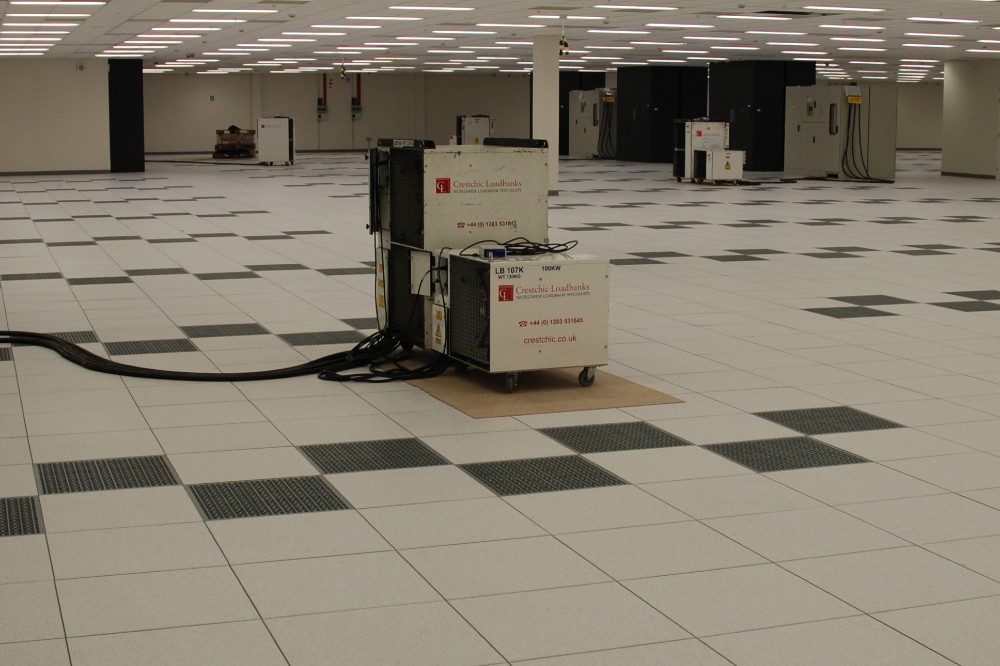As the world reels from the impact of the COVID-19 pandemic, it is no surprise that there is increased pressure for data centres to be immune to the risks of downtime, with load bank testing playing a vital role in any future resilience strategy. Paul Brickman, sales and marketing director at Crestchic Loadbanks, explores best practice when it comes to testing backup power supplies.
Increased expectations of uptime
The events of recent months have demonstrated that the ability to operate, secure and recover systems is critical to the global economy. With social isolation a key tactic in the fight against COVID-19, people are increasingly reliant on digital communications, whether because they are working from home, keeping in touch with family, spending time on social networking sites or turning to online shopping in a bid to fill their cupboards. Data centres are playing a vital role in this crisis – supporting mission-critical business and social activities but also allowing governments and health professionals to store and share data which could play an important role in fighting the spread.
Continuity planning and preparedness
While business continuity strategies during the crisis have inevitably focused on limiting infection and ensuring continuity of service, the longer-term ramifications of the pandemic will undoubtedly change the shape of continuity planning in the future. A continuous focus on efficiency and reliability means that preparedness is in the data centre industry’s DNA. Most have very robust strategies in place to deal with power blackouts. Most are already wise to the importance of testing power supplies to avoid downtime and uninterruptible power supplies (UPS) are universally accepted as a piece of critical business infrastructure.
This is evident in the company’s own order books. As a leading supplier of load testing equipment, the company has reported strong growth so far this year, with a significant amount of business coming from the growing data centre market. During the first month of lockdown, the company saw large orders for a major new data centre in Jakarta, London and a data telecommunications centre in Paris.
Preventative maintenance: An ally in the fight against downtime
While the growing focus on power resilience is increasingly evident, simply having the equipment in place is not enough. When power is mission-critical, as it is in a data centre environment, testing back-up power systems can make all the difference to whether they operate effectively when called upon.
Usually installed at build-phase, standby generators are a common solution to provide back-up power if the standard electricity supply is interrupted. They are known for being robust and reliable, offering the reassurance that they’ll do the job and kick in if the worst happens. However, just like any other internal combustion engine, lubrication, cooling systems, fuel system and electrics all need to be tested to ensure faultless operation. Lifting, moving and transporting sensitive equipment, as well as varying on-site conditions such as temperature and humidity, make it absolutely critical that backup power systems are tested in-situ in actual site conditions after being installed and on an ongoing basis thereafter.
Testing backup power. What does good look like?
While the risks of downtime vary from site to site, one thing remains constant – interruptions in power supply have the potential to cause operational chaos. Wherever a generator is installed, there is also a need for a load bank – a device used to create an electrical load which imitates the operational or ‘real’ load that a generator would use under normal operational conditions. Load banks are used to test, support, or protect a critical backup power source and ensure that it is working optimally should an outage occur.
Ideally, all generators should be tested annually for real-world emergency conditions using a resistive-reactive 0.8pf load bank. This type of load bank provides a picture of how well an entire system will withstand changes in load pattern while experiencing the level of power that would typically be encountered under real operational conditions.
The inductive loads used in resistive/reactive testing will show how a system will cope with a voltage drop in its regulator. This is particularly important for data centres, where multiple generators might be operated in parallel. In this type of application, a problem with one generator could prevent other generators from working as they should. Additionally, with fuel, exhaust and cooling systems also unused, as well as the potential for embedded moisture, an untested system becomes extremely high risk.
Properly planned and implemented, preventative maintenance strategies can minimise the likelihood of unscheduled breakdowns and outages, effectively negating the potential risk of costly commercial, reputational and legal issues.
The stark reality of inadequate testing
The reality is, in many instances, that those in charge of maintaining backup power have no regular testing schedule, making an assumption that occasionally powering the generator up, or testing for a minimal period, will suffice. By not testing the system adequately, the generator is put at risk of failure – with the fuel, exhaust and cooling system untested, along with the potential for embedded moisture, putting the system in the very high-risk category.
During a crisis, when businesses are required to operate on skeleton staff, having the confidence that back-up power will work if required is even more important. Whilst some maintenance and inspection will undoubtedly be on hold for the time being, we expect to see an upsurge in testing when we emerge from this crisis and anticipate that regular preventive maintenance will become increasingly prevalent in the future.

